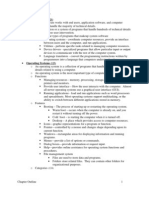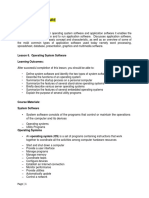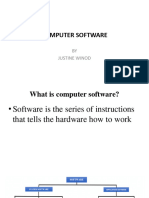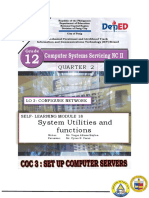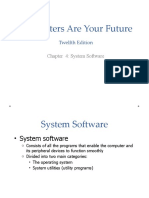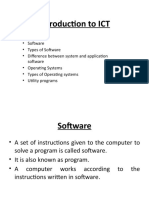0% found this document useful (0 votes)
31 views41 pagesComputer Science Software Notes CH 4-Updated
Fragmentation occurs when files are saved, deleted, or modified on a hard drive without enough contiguous space. This causes files to be broken into pieces and stored in non-contiguous blocks across the drive. Defragmentation consolidates these fragmented files so that all pieces of each file are aligned together to improve performance. It also frees up contiguous space and optimizes file placement.
Uploaded by
Umer JaseemCopyright
© © All Rights Reserved
We take content rights seriously. If you suspect this is your content, claim it here.
Available Formats
Download as DOCX, PDF, TXT or read online on Scribd
0% found this document useful (0 votes)
31 views41 pagesComputer Science Software Notes CH 4-Updated
Fragmentation occurs when files are saved, deleted, or modified on a hard drive without enough contiguous space. This causes files to be broken into pieces and stored in non-contiguous blocks across the drive. Defragmentation consolidates these fragmented files so that all pieces of each file are aligned together to improve performance. It also frees up contiguous space and optimizes file placement.
Uploaded by
Umer JaseemCopyright
© © All Rights Reserved
We take content rights seriously. If you suspect this is your content, claim it here.
Available Formats
Download as DOCX, PDF, TXT or read online on Scribd
/ 41













